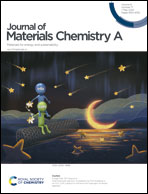Photothermocatalysis for efficient abatement of CO and VOCs
Abstract
CO and volatile organic compounds (VOCs) as main air pollutants are discharged in large quantities from various industrial processes. They are not only hazardous to human health, but also harmful to the air environment. Currently, catalytic combustion using supported noble metal catalysts is commercially used for the abatement of air pollutants in various industrial processes due to high catalytic efficiency and long-term durability. The major challenge for catalytic combustion is large energy consumption. Photocatalytic oxidation provides a low energy consumption approach as it utilizes inexhaustible solar energy. The major challenges for photocatalytic oxidation are low catalytic efficiency and prone deactivation. Photothermocatalytic oxidation provides a very promising approach for the abatement of air pollutants. It perfectly combines the advantages of catalytic combustion and photocatalytic oxidation. Photothermocatalytic abatement of air pollutants follows a mechanism of light-driven thermocatalytic oxidation, which is considerably enhanced by a novel photoactivation that is completely different from photocatalysis on semiconductor photocatalysts. This review will discuss the light-driven thermocatalytic oxidation mechanism and the novel photoactivation, and summarize several strategies of designing efficient photothermocatalysts such as nanostructured transition metal oxides, supported noble metal catalysts, nanocomposites of transition metal oxides and semiconductor photocatalysts, and so on.



 Please wait while we load your content...
Please wait while we load your content...